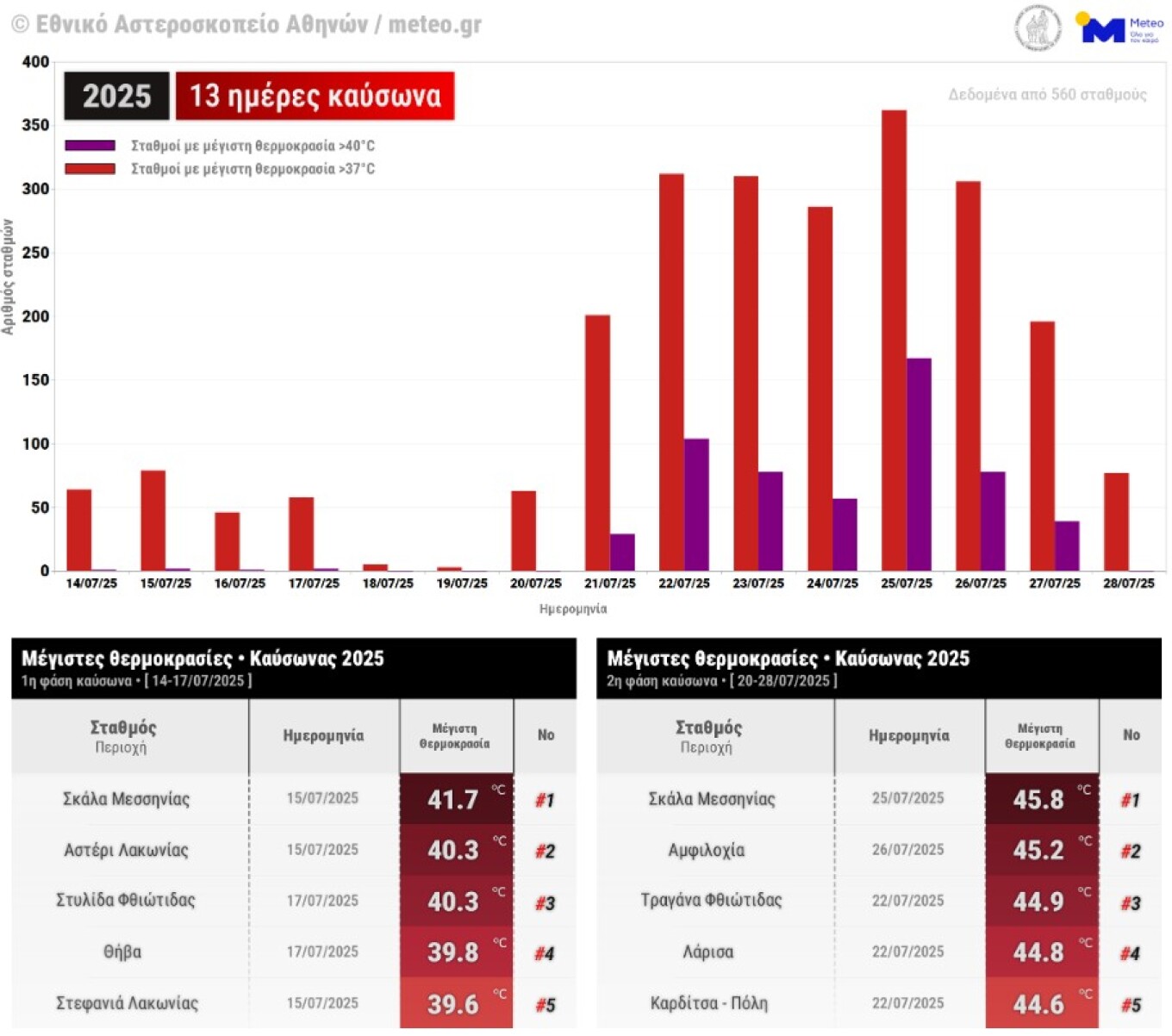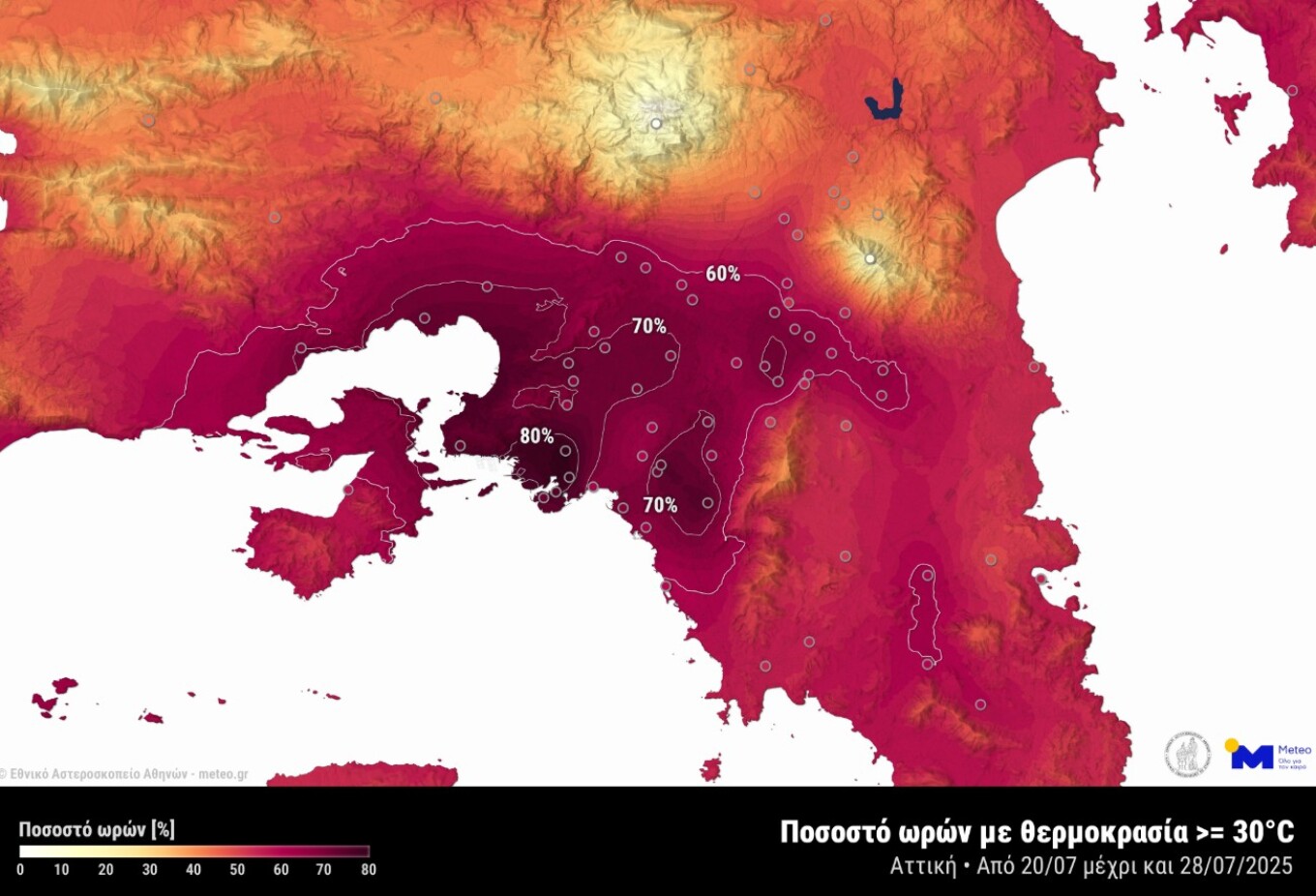The heatwave that tormented the country for 13 days ended on Monday evening (28/07). This was one of the longest-duration heatwaves recorded in Greece (the 2 longest in duration have been recorded in the last 3 years). According to records from the automatic meteorological station network of the National Observatory of Athens/ Meteo.gr, the following chart shows the number of stations where temperatures exceeded 37°C and 40°C (red and purple bars, respectively).
The chart shows 2 distinct phases:
– the first at the beginning of the heatwave from July 14 to 17
– the second (which was also stronger) from July 20 to 28
– However, a brief 2-day period on July 18-19 was also recorded between the heatwave period where temperatures fluctuated close to normal seasonal levels.

Across the country, the hottest day was July 25, when 362 stations exceeded the heatwave threshold (maximum temperature above 37°C) and 167 stations exceeded 40°C. On this day, almost the entire population of the country was affected by temperatures higher than 40°C.
For each of the two heatwave phases, the 5 highest temperatures recorded are listed at the bottom of the chart.
The highest temperature reading of 45.8°C was recorded in Skala Messinias on July 25, 2025, just 0.6°C short of the absolute maximum temperature record of the National Observatory of Athens/Meteo.gr automatic meteorological station network, which was recorded in Aigies Gytheio in July 2023 with a value of 46.4°C.
It’s worth noting that the highest temperatures were recorded in areas of Thessaly, the Peloponnese, Western Greece and Epirus, eastern Central Greece, regions of Macedonia and Thrace, as well as southern Crete.
The major impact of the heatwave appears once again in urban centers. As shown in the map of Figure 2, areas in Attica recorded percentages where up to 80% of the total hours during the 9-day period (20-28/07/2025) the temperature was equal to or above 30°C, meaning that even during nighttime hours, temperatures often failed to drop below 30°C. Very high percentages of continuous hours with temperatures above 30°C, though to a lesser extent, were also recorded in other areas such as Thessaly, eastern Rhodes, and southern Crete.





